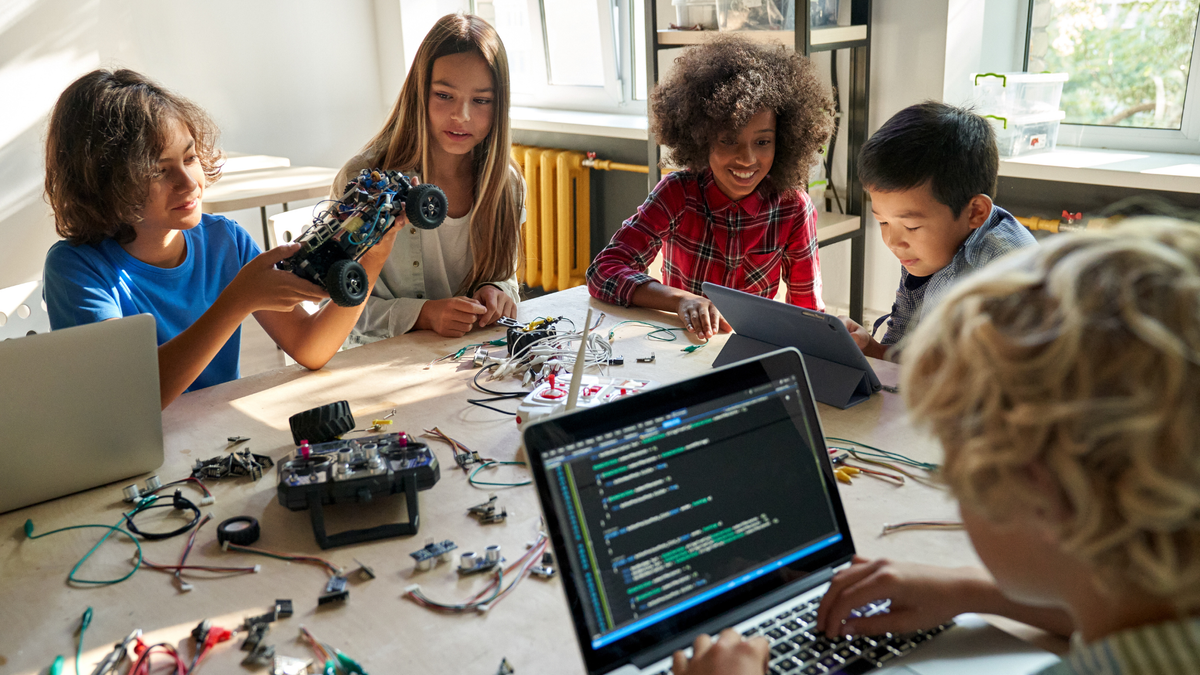Shape the Future of AI in Education for Better Learning

Imagine a classroom where every student learns at their own pace. They use resources that fit their unique learning styles. This isn’t a distant dream; it’s the future of AI in education.
Amid rapid tech growth, AI is a powerful tool. It could revolutionize education. Many believe AI can make personalized education a reality for students worldwide.
This blog post will explore AI’s role in reshaping personalized learning. It will cover its benefits, real-world applications, and access challenges. We must ensure equal access for all.
Understanding Personalized Education in the Context of the Future of AI in Education
Personalized education tailors learning to each student’s needs, interests, and abilities. Unlike traditional, one-size-fits-all methods, personalized education adapts to diverse learners. This approach targets individual learning styles and preferences. It aims to boost student engagement and success.
Consider Emma’s story. She was a bright student. But, she struggled to keep up in a traditional classroom. The strict structure and pace made her feel lost and overwhelmed. It hurt her confidence and love for learning. Emma’s experience shows the emotional toll of conventional education on students who don’t fit the mold. The future of AI in education aims to tackle these challenges. It seeks to create a more inclusive and supportive learning environment.

The Role of AI in Personalizing Learning Experiences
Artificial intelligence is at the heart of the future of AI in education. AI technologies are driving this change. These include adaptive learning platforms and intelligent tutoring systems. These tools use algorithms to analyze student performance data. They identify patterns that reveal individual learning needs.
Imagine an AI that analyzes a student’s performance in real time. It then adjusts the curriculum to match their needs. For example, if a student struggles with a math concept, an AI platform can provide extra, custom practice problems and resources. This change ensures all students get the support they need to thrive.
Statistical Insights and Personalized Education
AI’s use in personalized education is not just a dream. It is backed by strong statistics. A MarketsandMarkets report says the AI in education market will grow from $1.1 billion in 2019 to $25.7 billion by 2030. That’s a CAGR of 52.2% during the forecast period. There is a strong trend to adopt AI in education. It is driven by a need for better learning and teaching methods.
A World Economic Forum study found that AI, personalized learning in schools improved student outcomes by up to 30% in some cases. These improvements are due to AI. It can tailor education to each student’s learning speed and style. It meets their diverse educational needs. The future of AI in education shows immense promise for enhancing both teaching and learning outcomes.
Benefits of AI-Driven Personalized Education
A key benefit of AI in education is customized learning paths. AI can identify each student’s strengths and weaknesses. So, it can help educators create personalized learning experiences to meet their unique needs. This targeted approach can lead to improved learning outcomes and increased student engagement.
AI, along with customized learning paths, helps educators and learners. It provides insights into student learning patterns. The future of AI in education empowers students. It encourages them to own their learning journeys.
Addressing Challenges and Concerns in the Future of AI in Education
AI has great potential in education. But, we must address concerns to ensure all students have equal access. A key challenge is access to AI technologies. Some schools and students may miss out on these advances. Disparities in resources and funding are to blame.
AI in education raises privacy and ethical concerns. This is due to the collection and use of student data. Protecting student privacy is critical. Educators must use AI responsibly and protect sensitive data.
Real-world examples of AI in Education Is Already Here
AI has been successfully used in various schools. It can transform learning. Khan Academy and DreamBox Learning use AI to personalize learning. Their tools adapt to each student’s needs.
A school in a low-income area used AI to change its teaching methods. This led to a big rise in student success. It shows how AI in education can close achievement gaps. It can also create more inclusive learning environments.
What’s Next for Personalized Learning?
AI’s future in education is promising. New trends could improve learning. New technologies, like virtual and augmented reality, hold great promise. They can create immersive and engaging educational experiences.
We must now imagine a hopeful future. It is one where AI creates a world of learners. Each learner has a path designed for their success and happiness. AI can help. Educators, policymakers, and tech experts must work together. Their goal is to give every student a personalized education, no matter their background.
Conclusion
In conclusion, AI in education has great potential. It could revolutionize personalized learning for all students. It would provide tailored experiences to meet their individual needs and preferences.
By tackling the issues with AI in education, we can create a more fair and inclusive learning environment for all students.





